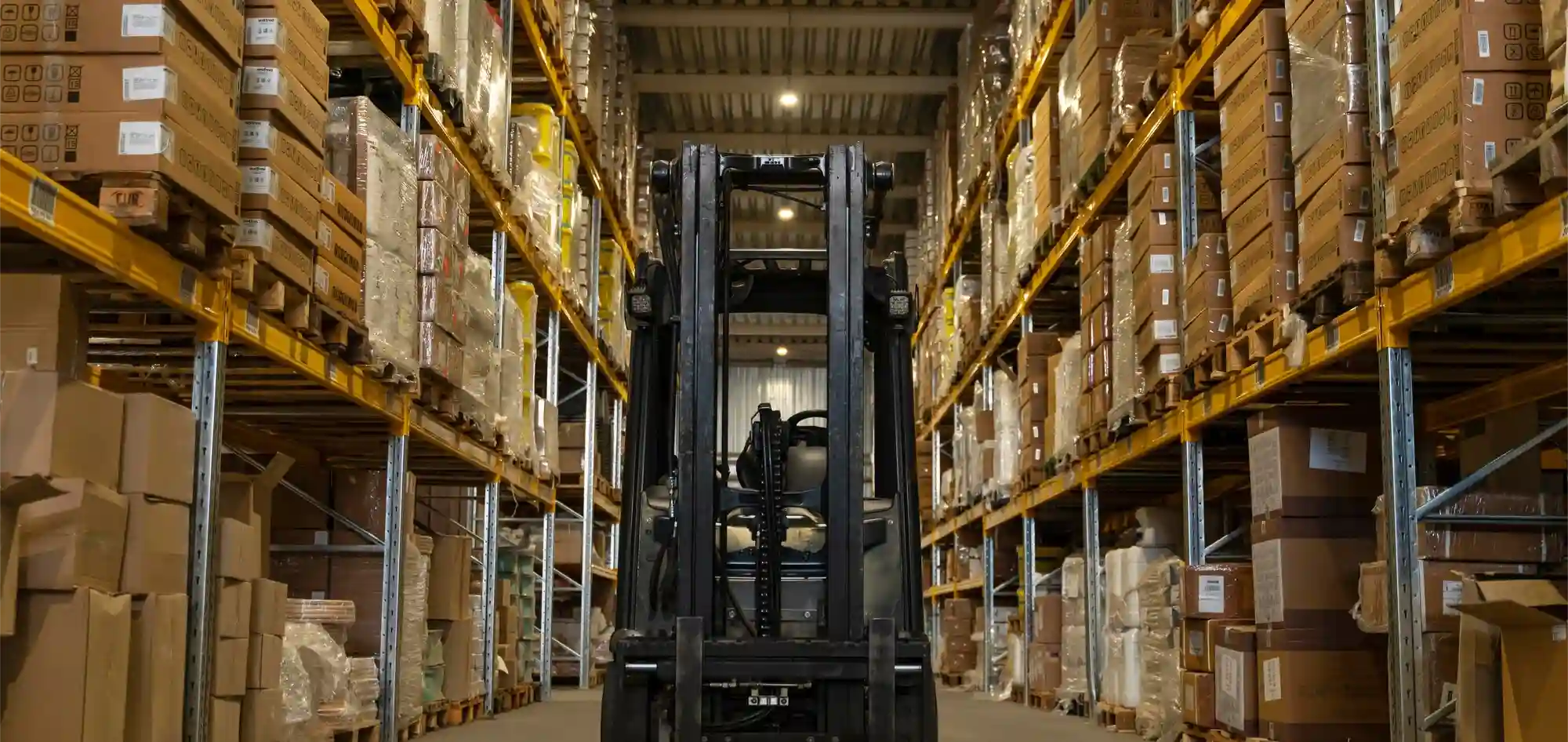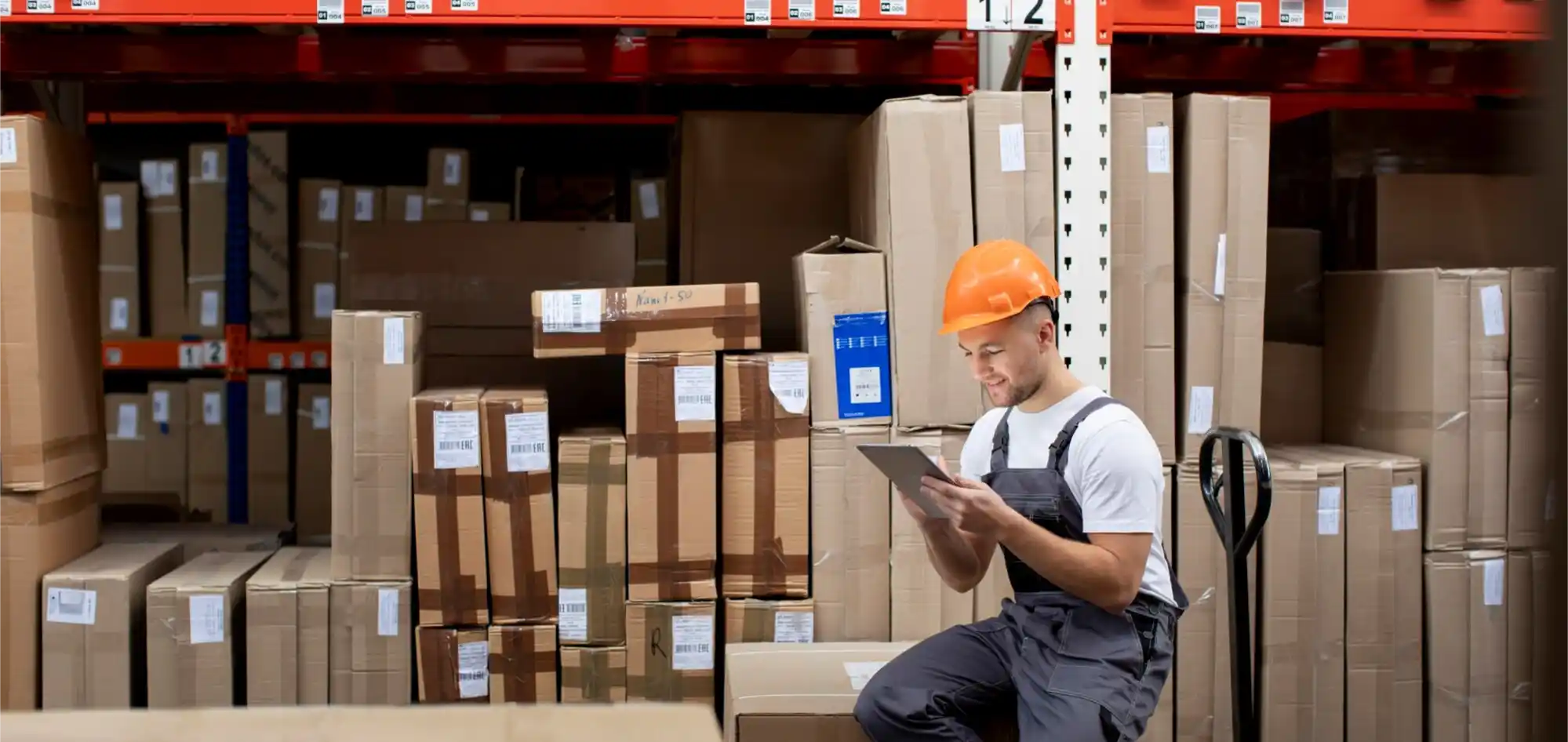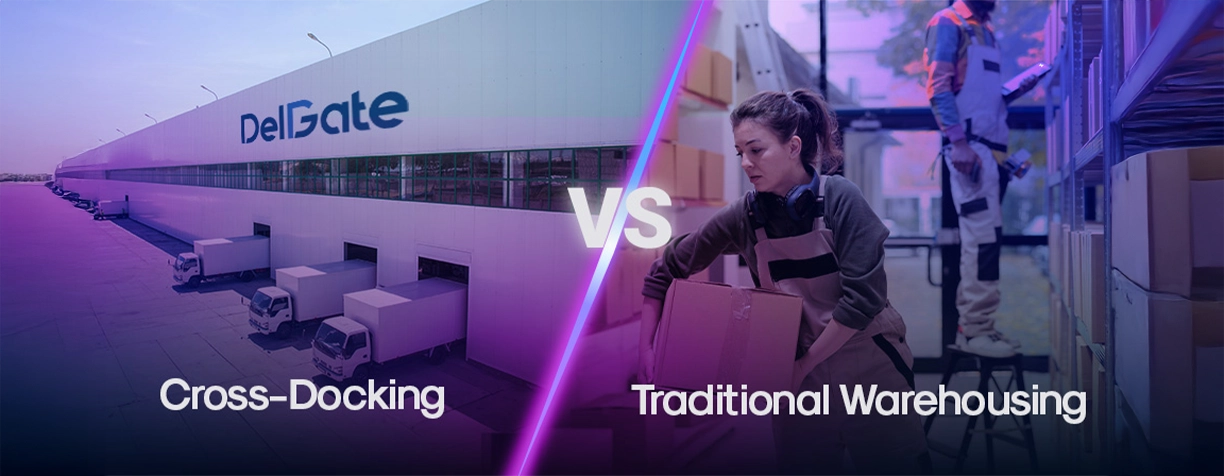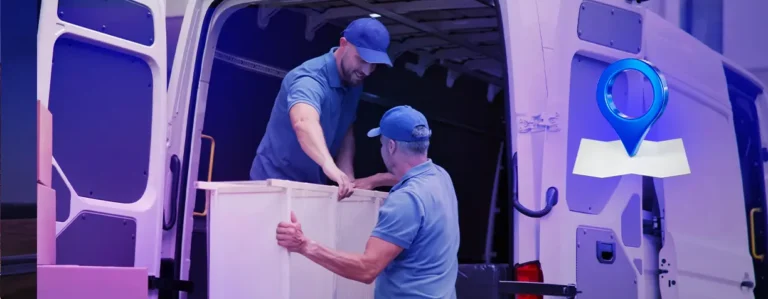The logistics industry has undergone significant transformations in recent years, with companies seeking to optimize their supply chains and improve operational efficiency. Two methods that have gained popularity are cross-docking and traditional warehousing. Cross-Docking vs. Traditional Warehousing has become a key discussion point among logistics experts. In this article, we will delve into the benefits and limitations of each method to help businesses make informed decisions.
Table of Contents
Understanding Cross-Docking
Before diving into the comparison between cross-docking and traditional warehousing, let’s define What Is Cross-Docking. Cross-docking is a logistics method where goods are received from a trucking company and loaded immediately onto another truck bound for another destination. This process eliminates the need for warehouse storage, reducing costs and enhancing supply chain efficiency. By streamlining operations, companies can reduce transit times, improve inventory management, and increase customer satisfaction.
Benefits of Cross-Docking
Cross-docking offers several benefits, including:
- Reduced transit times
- Improved inventory management
- Enhanced supply chain visibility
- Lower costs
- Increased customer satisfaction
Cross-Docking vs. Traditional Warehousing: Examining the differences highlights the advantages of cross-docking. It skips warehouse storage entirely. Goods go straight from one truck to another, which is a key difference. This direct transfer cuts out the time spent warehousing goods, leading to faster processes. The result? Lower costs, better inventory control, and a clearer view of the supply chain.
Traditional Warehousing
Let’s consider Cross-Docking vs. Traditional Warehousing again, to understand the contrast. Traditional warehousing, in contrast to cross-docking, relies on storing items. This often involves a warehouse stop before the final journey. Though warehousing has its place, it can slow things down and cost more, particularly with big orders. Companies may have to build bigger warehouses, hire more people, and spend more on keeping things stored.
Traditional Warehousing vs. Cross-Docking

When comparing traditional warehousing and cross-docking, it’s essential to consider the unique requirements of each business. For example, companies with high-volume orders and a consistent flow of goods may find cross-docking more beneficial, while those with low-volume orders and infrequent shipments may prefer traditional warehousing. Traditional Warehousing vs. Cross-Docking is the crucial decision factor that businesses must consider.
Canada 3PL: A Growing Market
Looking at Cross-Docking vs. Traditional Warehousing in the Canadian context, it’s clear why Cross-Docking in Canada is gaining traction. The need for third-party logistics (3PL) in Canada is growing. Cross-docking offers a streamlined supply chain approach, making it a hit. With major hubs in Vancouver, Toronto, and Montreal, cross-docking provides a smart location for businesses aiming to grow throughout North America.
Fastest Shipping in Canada
In today’s fast-paced business world, fastest shipping in Canada is crucial for companies looking to meet customer demands. Cross-Docking vs. Compared to Traditional Warehousing, cross-docking offers a significant advantage in terms of transit time, with goods being shipped directly to their final destination without the need for intermediate storage.
Cross-Docking in Vancouver
Cross-Docking in Vancouver is a crucial location for businesses seeking to expand across North America. Vancouver’s proximity to major ports and its strategic location make it an ideal hub for cross-docking operations.
Cross-Docking in Toronto
Cross-Docking in Toronto is also an important hub for businesses looking to improve their supply chain. Toronto’s vast network of transportation infrastructure and its access to major highways make it an ideal location for cross-docking operations.
Cross-Docking in Montreal
Cross-Docking in Montreal is an important strategic location as well. Montreal’s proximity to major ports and its strategic location make it an ideal hub for cross-docking operations.
Case Study: Cross-Docking in Canada

A Canadian e-commerce company recently implemented cross-docking services to improve supply chain efficiency. By partnering with a 3PL provider, they reduced transit times by 30%, decreased inventory levels by 25%, and lowered costs by 15%. This case study highlights the benefits of implementing cross-docking services in Canada.
Chart: Cross-Docking in Canada
| Location | Cross-Docking Cost | Traditional Warehousing Cost |
| Vancouver | $10,000 | $20,000 |
| Toronto | $15,000 | $30,000 |
| Montreal | $8,000 | $18,000 |
Fulfillment Services Providers
Several companies offer fulfillment services that cater to businesses implementing cross-docking in Canada. These services include order fulfillment, inventory management, and supply chain optimization.
Notable Providers:
- FedEx Supply Chain
- XPO Logistics
- DelGate
- UPS Supply Chain Solutions
- Kuehne + Nagel
Cross-Docking in the US
Beyond Canada, Cross-Docking vs. Traditional Warehousing looks even more interesting. The US, with its huge logistics network and transport systems, is a top spot for cross-docking. Firms wanting to boost their supply chains in the US can think about working with a 3PL provider to use cross-docking.
Cross-Docking in Europe
Cross-docking is also thriving in Europe, where a sophisticated logistics network is already in place. The region’s extensive network of major ports and transportation hubs makes it an ideal location for cross-docking operations. As companies consider expanding their supply chains in Europe, understanding the benefits of cross-docking can help them streamline their logistics and cut costs. By examining Cross-Docking vs. Traditional Warehousing, businesses can make informed decisions about which approach best suits their needs.
Cross-Docking in Asia
Asia has embraced cross-docking too, thanks to strong logistics networks across many countries. Proximity to key ports and a prime location make the region perfect for cross-docking. Looking at Cross-Docking vs. Traditional Warehousing in this context, it’s clear why it’s catching on so quickly.
Case Study: Cross-Docking in Asia
A Singaporean e-commerce company recently implemented cross-docking services to improve supply chain efficiency. By partnering with a 3PL provider, they reduced transit times by 30%, decreased inventory levels by 25%, and lowered costs by 15%. This case study highlights the benefits of implementing cross-docking services in Asia.
Chart: Cross-Docking in Asia
| Location | Cross-Docking Cost | Traditional Warehousing Cost |
| Singapore | $10,000 | $20,000 |
| Hong Kong | $15,000 | $30,000 |
| South Korea | $8,000 | $18,000 |
Cross-Docking in Latin America
Cross-docking is also popular in Latin America, with many countries having a well-developed logistics infrastructure. The region’s proximity to major ports and its strategic location make it an ideal hub for cross-docking operations.
Cross-Docking in the Middle East
The Middle East is another hotbed for cross-docking, thanks to well-established logistics across many nations. The area’s closeness to major ports and strategic location makes it great for cross-docking. When we consider Cross-Docking vs. Traditional Warehousing here, it’s easy to see the advantages.
Cross-Docking in Africa
Cross-docking is also gaining traction in Africa, where a robust logistics network is in place across many countries. The continent’s proximity to key ports and its prime location create a perfect storm for cross-docking success. When evaluating options, understanding the differences in Cross-Docking vs. Traditional Warehousing can help businesses make informed decisions about their logistics strategy in the region.
Cross-Docking in Oceania
Cross-docking is also popular in Oceania, with many countries having a well-developed logistics infrastructure. The region’s proximity to major ports and its strategic location make it an ideal hub for cross-docking operations.
Benefits of Implementing Cross-Docking Services
Cross-docking offers some great advantages for companies. You can often see lower costs, better efficiency, and a clearer view of your supply chain. By simplifying things, businesses can get products to customers faster, manage stock better, and keep those customers happy. Considering Cross-Docking vs. Traditional Warehousing helps to clarify how these benefits stack up.
Drawbacks of Implementing Cross-Docking Services

While cross-docking is a powerful tool, it does come with potential downsides like added complexity and higher initial expenses. Businesses need to really assess their specific needs before jumping in. Thinking about Cross-Docking vs. Traditional Warehousing helps weigh these pros and cons.
Conclusion
Cross-Docking vs. Traditional Warehousing is a critical decision for companies looking to optimize their supply chains. By understanding the benefits and limitations of each method, businesses can make informed decisions. This article has provided valuable insights into the world of cross-docking in Canada and beyond.





